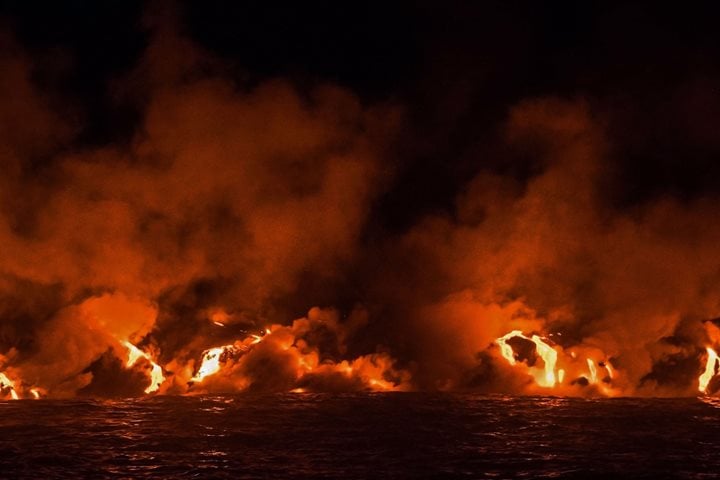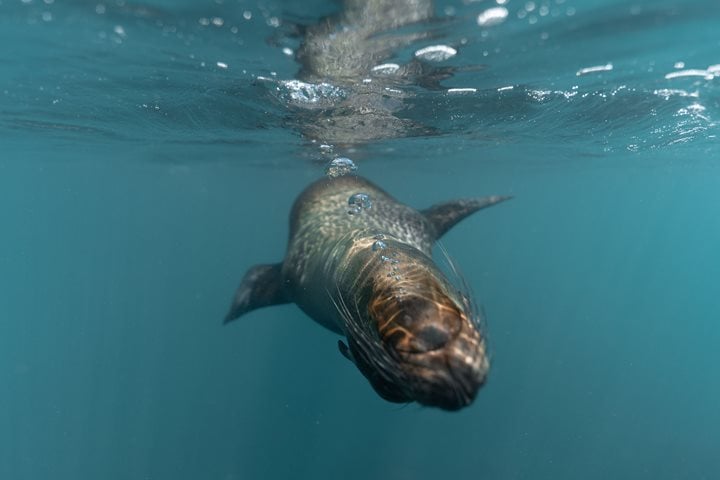The sea was surprisingly calm as we sailed north from Academy Bay and arrived at sunrise off the two small islands, North and South Plaza, next to the large island of Santa Cruz. Just a few hundred yards from the coast, one of these two small islands has a population of Galapagos land iguanas, and the other has not. The vagaries and role of chance in arrival and establishment are always fascinating on oceanic islands, with the Galapagos archipelago being no different.
Immediately as one arrives on shore, the juvenile sea lions playing in the surf catch your eye. Then the massive prickly pear cacti take over the landscape inland. Then the yellow and brown land iguanas come into focus hanging about the base of the cacti, waiting for pads, fruit and flowers to fall. Then a particular individual catches my eye: the hybrid! South Plaza is such a small island, the territories of marine and land iguanas overlap. Add to that, the mating season of marine iguanas overlap with the mating season of land iguanas...so over the years…early season male marine iguanas have mated with late season female land iguanas. The rare – very rare- hybrid iguana, originally recognized as such in 1981/82 by Howard and Heidi Snell, has appeared as a result. Not expected to live very long, several have defied the odds and have reached well over 10 years old. Despite having a long, laterally-flattened tail like its marine ancestor, they have been seen hanging out with the other land iguanas and eating cactus pads!
The day just continued to give us surprizes. After the snorkelers and kayakers set off for Santa Fe in the afternoon, three orcas made an appearance right next to the ship, two females and a male (the matriarch’s son, not her mate)! So some of those who thought to have a lazy afternoon on board, grabbed their life jackets and jumped into the remaining Zodiac with the hotel manager Daniel, Zodiac driver Edwin and I – and took off to see if we could get a better look. And did we ever! In a brief but adrenaline-filled moment, one of them surfaced directly behind the Zodiac – just beautiful! They are not a common presence in Galapagos, so this sighting was really special!
On shore for our afternoon walk, the unique Santa Fé land iguana was spotted numerous times, most often under a Santa Fé prickly pear cactus (Opuntia barringtonensis), in company of the endemic lava lizard. However, the star of the show was the diminutive Galapagos endemic rice rat…a delightfully innocent and naïve creature, this animal holds “the mammalian world record for trans-oceanic crossings”…for having made the open-ocean crossing millennia ago (rafting we assume) the 600 miles / 1,000 kilometres from mainland South America.
Really – what a magnificent day of adventure and discovery!







